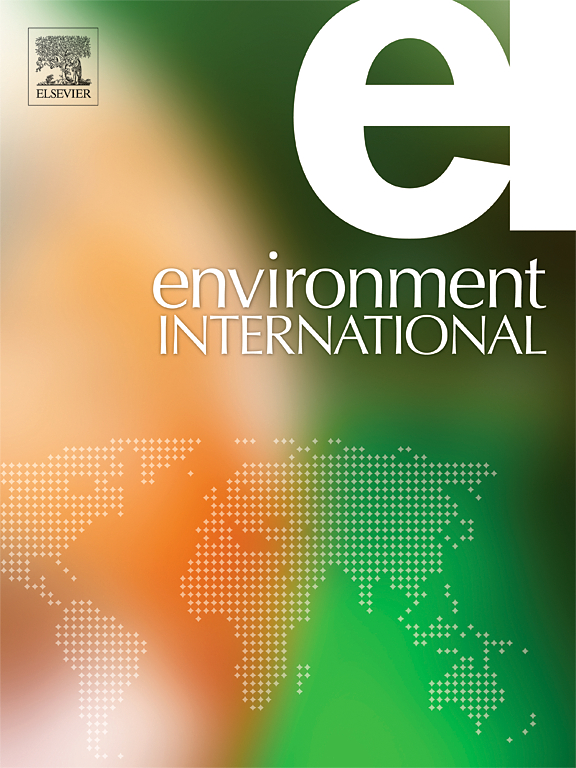Comparison of air pollution exposure assessment methods and the association with children’s respiratory health
IF 10.3
1区 环境科学与生态学
Q1 ENVIRONMENTAL SCIENCES
引用次数: 0
Abstract
Introduction
Epidemiological studies of the associations of long-term exposure to outdoor air pollution with asthma onset and lung function in children have used different exposure assessment methods. Little is known about how these different methods affect the magnitude of the effect estimates. The aim of this study was to compare associations of long-term air pollution exposures, estimated with different exposure assessment methods, with asthma incidence and lung function.
Methods
Eight exposure assessment methods, differing in modelling (dispersion, empirical) and monitoring strategy (fixed site, mobile), were applied to estimate annual average air pollution levels at the residential addresses of 3,687 participants of the Dutch PIAMA birth cohort. Associations of air pollution exposure with asthma and lung function were assessed and compared between methods. Heterogeneity in the associations was assessed with meta-analyses.
Results
Estimated exposure levels and contrasts differed substantially between methods. Exposure estimates from the different methods were moderately to highly correlated, with Pearson correlations ranging from 0.5 to 0.9. Higher air pollution levels were consistently associated with higher asthma incidence and lower FEV1. However, the magnitude of the association differed between methods (e.g. the ORs (95 % CI) for asthma incidence ranged from 1.09 (0.99; 1.21) to 2.56 (1.50; 4.36) for BC per 1 µg/m3 increment).
Conclusion
Different air pollution exposure assessment methods resulted in consistent conclusions about the presence and direction of associations with asthma incidence and lung function in children, but associations differed in magnitude. Differences in exposure assessment methods may partially drive heterogeneity in associations between different studies.
空气污染暴露评价方法的比较及其与儿童呼吸健康的关系
长期暴露于室外空气污染与儿童哮喘发病和肺功能之间关系的流行病学研究采用了不同的暴露评估方法。对于这些不同的方法如何影响效应估计的大小,人们知之甚少。本研究的目的是比较长期空气污染暴露与哮喘发病率和肺功能的关系,这些关系是用不同的暴露评估方法估计的。方法采用不同建模(分散、实证)和监测策略(固定地点、移动)的光暴露评估方法,估算荷兰PIAMA出生队列3,687名参与者居住地址的年平均空气污染水平。评估和比较了空气污染暴露与哮喘和肺功能的关系。通过荟萃分析评估这些关联的异质性。结果不同方法的估计暴露水平和对比差异很大。不同方法的暴露估计值具有中等到高度的相关性,Pearson相关性在0.5到0.9之间。较高的空气污染水平始终与较高的哮喘发病率和较低的呼吸当量有关。然而,不同方法之间的关联程度不同(例如,哮喘发病率的or(95 % CI)从1.09 (0.99;1.21)至2.56 (1.50;4.36)每1 µg/m3增量的BC)。结论不同的空气污染暴露评价方法对儿童哮喘发病率和肺功能相关性的存在和方向得出了一致的结论,但相关性程度不同。暴露评估方法的差异可能部分导致不同研究之间关联的异质性。
本文章由计算机程序翻译,如有差异,请以英文原文为准。
求助全文
约1分钟内获得全文
求助全文
来源期刊

Environment International
环境科学-环境科学
CiteScore
21.90
自引率
3.40%
发文量
734
审稿时长
2.8 months
期刊介绍:
Environmental Health publishes manuscripts focusing on critical aspects of environmental and occupational medicine, including studies in toxicology and epidemiology, to illuminate the human health implications of exposure to environmental hazards. The journal adopts an open-access model and practices open peer review.
It caters to scientists and practitioners across all environmental science domains, directly or indirectly impacting human health and well-being. With a commitment to enhancing the prevention of environmentally-related health risks, Environmental Health serves as a public health journal for the community and scientists engaged in matters of public health significance concerning the environment.
 求助内容:
求助内容: 应助结果提醒方式:
应助结果提醒方式:


